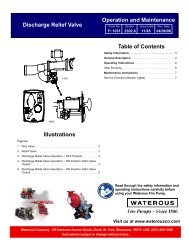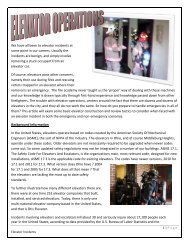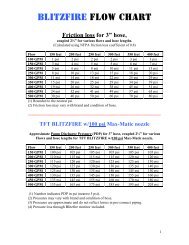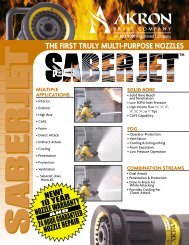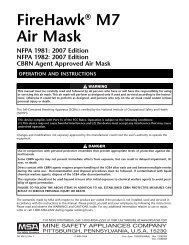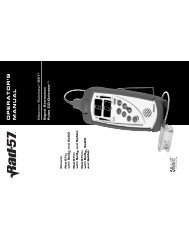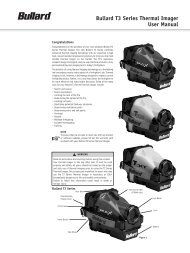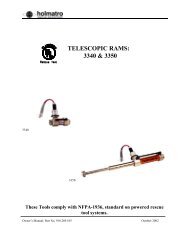PDF File - 220 KB - Dcfpnavymil.org
PDF File - 220 KB - Dcfpnavymil.org
PDF File - 220 KB - Dcfpnavymil.org
You also want an ePaper? Increase the reach of your titles
YUMPU automatically turns print PDFs into web optimized ePapers that Google loves.
K-90 TalismanXL Operating ManualWARNINGWhen looking at shiny objects such as chrome, unpainted aluminum,unpainted stainless steel, and other metals, the DDT temperature readingscan be significantly distorted. It should be noted that when viewinga fire scene, DDT is measuring the temperature of an object andNOT the air temperature. Failure to observe this warning could resultin death or serious injury.8.1.1 Emissivity and its Effects on DDTThe DDT provides the average relative (or “observed”) temperature of an object,or objects within the crosshairs. The relative temperature is displayed in numericalform in the upper right hand corner of the viewing screen.The accuracy of the relative temperature is affected by many factors, includingthe “emissivity” of the object. In short, an object’s emissivity is its ability to eitherabsorb or reflect heat energy. The better the characteristic to absorb heat (thehigher the emissive value), generally the more accurate the temperature reading.The DDT installed in the K-90 TalismanXL assumes an emissivity of 0.95. Thatis, for objects with emissivity of 0.95, the DDT will return temperature readingswith maximum accuracy. The value of .95 was chosen because most objectsfound in normal, traditional structural firefighting environments will have anemissivity value close to 0.95. This will give the firefighter the most accurateaverage temperature possible, under these conditions.However, when looking at shiny objects such as chrome, unpainted aluminum,unpainted stainless steel, and other metals, the DDT temperature readings canbe significantly distorted. (For painted objects, the emissivity of the paint, ratherthan the emissivity of the actual material should be considered.) When thetemperature of metal objects are being estimated using DDT, it is important tonote that painted metal objects generally return a much more accurate temperaturereadout than unpainted metals.The cross-tabulation in the tables following will give the user a general idea ofthe effective (real) temperature versus the observed temperature, given varyingemissivity levels. The higher the material’s emissivity, the more accurate theDDT reading will be.Copyright 2005 ISG Thermal Systems USA, Inc. 16



